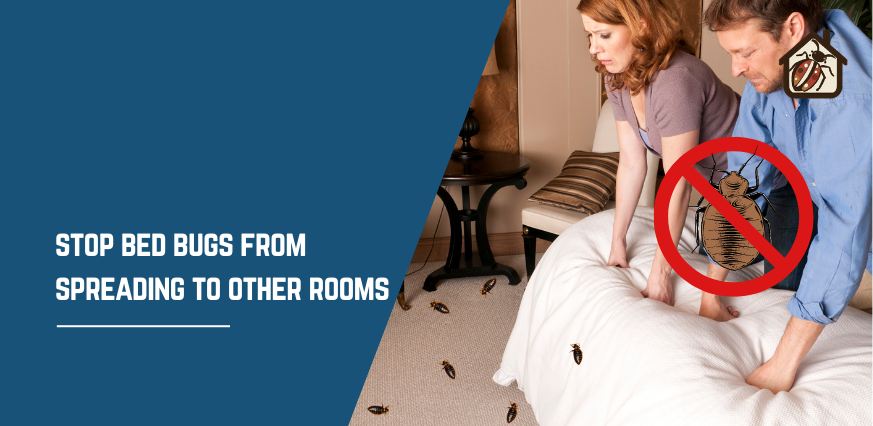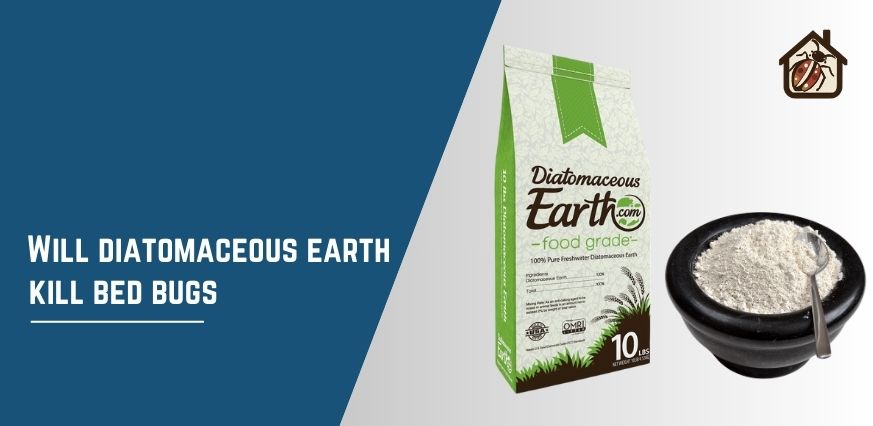
stop bed bugs from spreading to other rooms
When bed bugs are unsettlingly found in one room, you frequently become concerned right once that they might have spread to other parts of your house. Taking prompt, decisive action in addition to planned measures is essential to stopping these hardy pests from spreading to other areas. In this in-depth post, we explore crucial ideas and useful tactics that will provide you with the tools you need to successfully control bed bugs and take preventative action to stop bed bugs from spreading to other rooms.
This comprehensive book provides a comprehensive way to prevent bed bugs from invading your living spaces, ranging from early detection procedures to professional interventions and prevention tools. It guarantees peace of mind and efficient defense against these unwanted guests.
How to detect bed bugs early?
Regular Inspection
Making it a practice to regularly inspect your living areas can help catch bed bugs early on. If you want to spot the telltale symptoms of a possible infestation—such as little eggs, shedding exoskeletons, or even live bugs—you have to carefully inspect your bedding and room. In addition to increasing your awareness, this proactive approach to routine inspection offers a priceless possibility for timely action, resolving any new problems before they have a chance to worsen.
You create a vigilant defense against the possible incursion of bed bugs by adding routine inspections into your daily routine, which promotes a living environment that puts your health and peace of mind first.
Decluttering
The idea of keeping a clutter-free bedroom goes beyond aesthetics; it’s an important tactic in reducing possible bed bug hiding places. These pests have the ideal spot to hide—piles of clothes or other items spread around, to construct their nest. In contrast, a well-organized space greatly diminishes the likelihood of infestation, hence increasing the difficulty level for bed bugs to establish a foothold.
Decluttering is not only a matter of taste; it’s also a proactive step that helps make your living spaces less inviting to bed bugs, which will support your efforts to keep them safe and bug-free.
Avoiding Secondhand Furniture
Although buying used furniture could be alluring, being cautious when doing so is essential to preventing bed bugs. Preserving the integrity of your living spaces requires you to thoroughly check each used item for evidence of bed bugs before bringing them into your house.
If used furniture is not carefully inspected, it may unintentionally introduce these hardy pests into your home, possibly resulting in infestations. By being diligent in your examination and, if required, treatment of used furniture, you strengthen your defenses against bed bugs and guarantee that your house stays a haven of comfort and well-being.
Protective Covers
Using protective coverings to shield your mattress and box spring against bed insect infestations is a proactive step toward building a strong defense. These encasements keep bed bugs out of these vital spaces by providing an extra line of protection.
Protective covers also ensure that bed bugs cannot enter the mattress or box spring and hide there, making it simpler to identify and treat any possible infestation quickly. Purchasing these safeguards adds an extra degree of security and peace of mind to your continuous fight against bed bugs, ensuring the long-term viability of your living areas.
How to create a bug-free space?
Immediate Isolation
When an infestation of bed bugs is unearthed, it is critical to act quickly and decisively to stop these unwanted parasites from spreading. As a critical initial line of defense, immediate isolation aims to contain the problem inside the impacted room.
Start by carefully putting pillows, blankets, and plush animals inside sealed plastic bags. This keeps bed bugs from escaping and makes getting rid of them easier. By separating these things, you reduce the chance that the infestation will spread and establish a controlled space for further treatments.
Restricting Movement
Restricting mobility within the affected room is crucial for the immediate reaction to a bed bug infestation. Reducing activity has two benefits: it reduces the possibility that bed bugs may unintentionally move to other locations and it fosters an atmosphere that will be favorable to further expert treatment.
Restricting movement also means not putting clean clothes, luggage, or other items in the infected area. This preventive step lessens the possibility that bed bugs may travel through your items and infiltrate other areas of your home.
Thorough Inspection
A comprehensive strategy must include a thorough investigation of nearby locations to minimize potential bed bug migration, even though the contaminated room is the primary emphasis at this time. Examining adjacent rooms with vigilance is essential for early diagnosis and management.
Focus on high-risk locations including baseboards, mattresses, box springs, and furniture seams prone to infestation. Extending the reach of your examination increases the probability that you will spot any indications that bed bugs are trying to make a home in adjacent areas.
This proactive approach guarantees a thorough awareness of the affected areas and strengthens your defenses against the infestation’s spread, laying the groundwork for efficient and focused treatment plans.
What are the tools for containment?
Diatomaceous Earth (DE)

The use of food-grade Diatomaceous Earth (DE) is an efficient method of combating bed bugs by utilizing the power of nature. When sprayed properly around the perimeter of the infected room and surrounding locations, this natural powder creates a powerful barrier.
Bed bugs that try to cross DE’s route are dehydrated and eventually killed, thanks to its special mechanism. In addition to being a proactive technique to stop bed bugs from moving, this non-toxic and environmentally beneficial method fits in with a comprehensive pest management plan that considers the environment.
When applied carefully, DE serves as a preventive measure that enhances other therapies and makes a valuable contribution to an integrated strategy for successfully managing bed insect infestations.
Interceptors
To improve the effectiveness of your bed bug defense arsenal, install interceptor traps next to bedposts and beneath furniture legs. These specially designed traps act as watchful sentinels, catching migrant bed bugs and offering useful clues about their whereabouts. In addition to determining the degree of the infestation, interceptors are essential for upsetting the bed bugs’ travel habits.
These traps help isolate the afflicted areas by forming a barrier preventing pests from moving forward. The data obtained by interceptor traps helps to guide subsequent intervention tactics, making your effort to remove bed bugs from your living areas more focused and successful.
Double-Sided Tape
Double-sided tape shows up as a useful and affordable instrument in the complex dance of bed insect containment. Use this sticky tape to form a barrier around furniture legs that prevents bed bugs from climbing. This clever but basic technique restricts their range of motion, keeping them from climbing furniture or other objects.
The double-sided tape functions as a barrier, preventing the pests from spreading and adding another line of protection against their penetration. Bed bugs are ensnared when they come into touch with the tape, which prevents them from moving around freely and reproducing.
Including double-sided tape in your bed bug management plan gives your defense a more practical aspect and provides an accessible and reasonably priced way to support other focused actions.
Can you starve bed bugs to death?
Vacuuming
Use a HEPA-filtered vacuum regularly to clean baseboards, furniture, and carpets. To stop it from escaping, throw the bag outside right away in a sealed garbage bag.
Blitz the Laundry
Use hot water and high heat to wash all clothing, drapes, and bedding that may be contaminated. After receiving professional therapy, repeat to guarantee complete eradication.
Steam Cleaning
To eliminate bed bugs and their eggs in their hiding locations, use a high-temperature steam cleaner on mattresses, box springs, and upholstered furniture.
You may also like:
- How Do Bed Bugs Find You
- What is the color of bed bug eggs
- How long it takes to hatch eggs for bed bugs
FAQs
How can I detect bed bugs early in my living spaces?
Why is decluttering important in the fight against bed bugs?
Is it safe to buy secondhand furniture to avoid bed bugs?
How do protective covers contribute to a bug-free space?
What is the immediate isolation strategy for bed bug infestations?
Why is restricting movement essential in managing bed bug infestations?
How can Diatomaceous Earth (DE) be used against bed bugs?
Can you starve bed bugs to death?
Conclusion
Although do-it-yourself techniques can offer short-term respite, expert pest treatment is necessary for total eradication. Specialized pesticides, fumigation methods, and heat treatments are available to qualified professionals, guaranteeing a thorough and long-lasting remedy and successfully eliminating all stages of the bed bug life cycle.
Aggressive confinement tactics, careful examination, and proactive efforts are required to stop bed bugs from spreading to other rooms. You can protect your house and guarantee a prompt and efficient defense against these hard pests by adding these methods to your reaction strategy.


